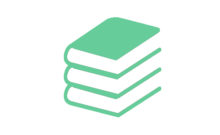In this article I will guide you through the fundamental questions that you will be asked, shortly after completing the briefing form.
Book title and author name
This may seem obvious but you’d be amazed how many authors send sample covers and descriptions of their books but forget to send their titles.
Genre
Articles on cover clichés with writers poking fun at book covers with similar covers can be fun but they’re missing the point. Covers that are branded in a similar way to covers that are already selling well should also sell well. Look at the bestsellers in your genre and expect your cover to follow a similar trend. Bucking the trend is risky as you risk losing the readers of the authors whose audience you are marketing to.
Description of book
Most cover designers won’t read your book. They don’t need to as it isn’t necessary and the budgets won’t allow for the extra time that this takes. However, I’ll need an outline or synopsis to give me an idea of the story. It doesn’t have to be pages long. A paragraph or two will suffice, as it’s just to give a feel for the book, the characters and locations featured.
Key elements
This is your chance to point out what you consider to be important. For example, this could be a scene specific to the cover as opposed to the whole book. Elements could also include a subtitle, strapline and/or review quotes.
There maybe elements from the book that you feel could work on the cover. It might be that a text-heavy cover with a background colour would work better than people. Or you realize after looking at other covers that having people is a definite ‘no’. Should the cover be obscure or should it have a location-based image?
Being too specific, as for example wanting a character to look literally as you imagine, is not recommended. If your cover requires a particular type of person or group of people there will be an additional cost to create these characters, based on the complexity. A separate quote will be provided for this service. If you would like a cost on this aspect before submitting your full brief and paying a deposit, please send a message using the Contact Form . PLEASE NOTE: Simpler book covers with more abstract concepts are ALWAYS better.
I also strongly recommend NOT over complicating the cover. A reader will browse a small thumbnail of your cover (among many others) for only two seconds before deciding whether to click for more information. Creating a cluttered look for your book with too many characters simply makes the thumbnail less clear and less likely to generate sales. The best book covers have a simple image that evokes an emotion and tells a straightforward message. Cover design isn’t about mimicking a very specific scene but having a general appeal to your target audience and making them pick up your book.
Links and examples of covers you like
This is one thing that is incredibly useful, even if some authors are reluctant to supply any. It’s such an important part of the process. You’ll need to send links to or images of the covers that are both in the genre of your book and that you like.
The samples are a vital key to achieving a good end result. As an author you know your book best and it’s important to reflect where it will sit in the marketplace. This is the most efficient and cost-effective way to ensure you get a cover that both reflects the genre you’re writing in and will work in YOUR marketplace.
Paperback Package
If you are ordering the Paperback package (which also includes an Ebook cover design) you will also need to provide the following:
Blurb for the back cover
A brief description that will entice readers to want to buy your book.
Paperback trim size
These are standard trim sizes for paperbacks, as defined by CreateSpace, for example 5″x8″, 5.06″x7.81″, 5.25″x8″, 6″x9″ 6.14″x9.21″, 7″x10″
Final Formatted Page count
It is important that you provide the final formatted page count at the trim size you will be using. This allows me to determine the spine width for the paperback, which will change for every 2 pages difference in the page count.
Paper colour
The colour of the paper can have an effect on the overall thickness of the book. Just a difference of two pages can change spine width. It’s therefore necessary to state whether cream or white paper is being used. As a general rule of thumb, for fiction books, cream paper is usually used, while white paper is the common choice for non-fiction.
Finally, I hope this guide has been useful and if there are any further questions you would like to ask then please don’t hesitate to use the contact form. Rest assured, I will use the information provided to design the best quality cover that your book deserves.



